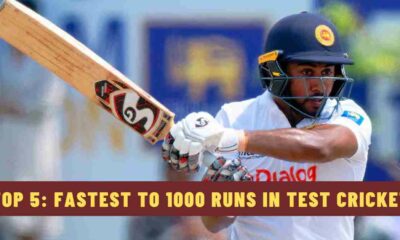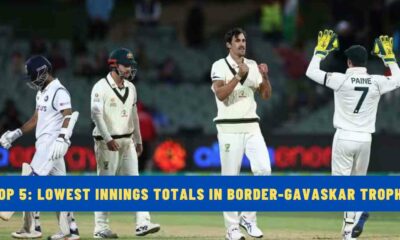Cricket Listicles
Top 5: Fastest Centuries in ODI Cricket
In this article, find out the list of the top five batters who have smashed the fastest centuries in ODI cricket.
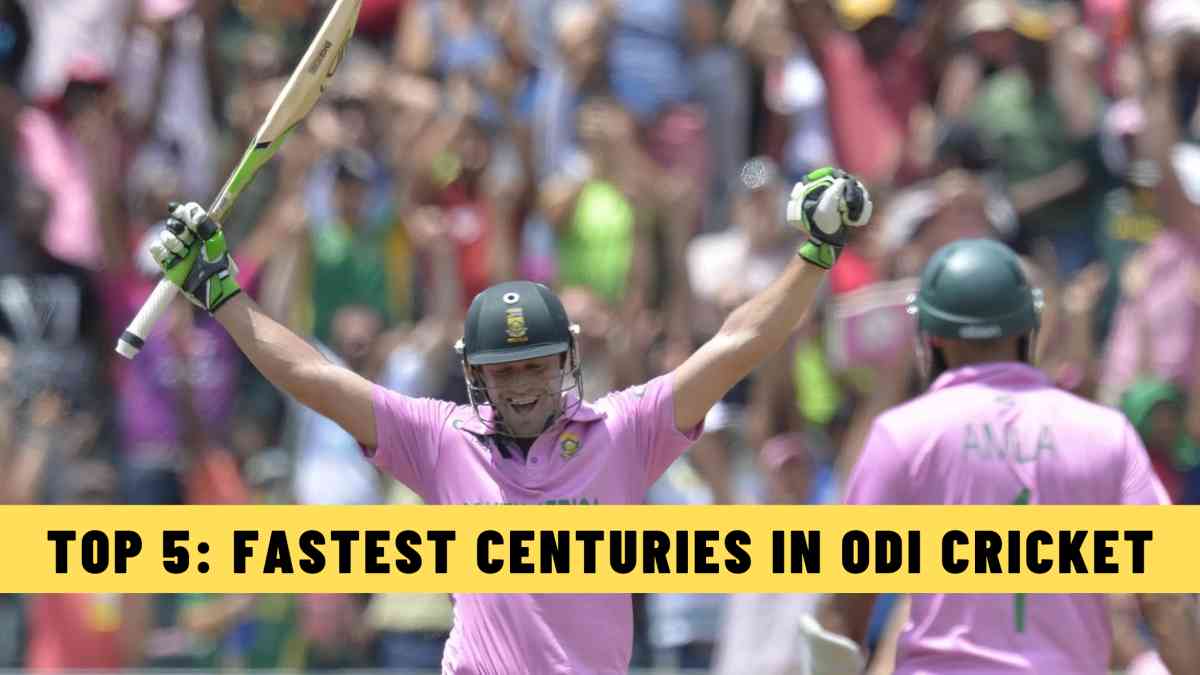
In the heart-pounding world of One Day International (ODI) cricket, where every ball can change the course of a match, scoring a century at breakneck speed is an achievement that electrifies fans and leaves opponents shell-shocked.
These rapid-fire centuries are more than just a tally of runs — they’re feats of pure athleticism and boldness, where a batsman seizes the moment and transforms a game with sheer brilliance. The fastest centuries in ODI history are legendary, showcasing players who didn’t just play the game — they redefined it.
Here, let’s look at the top five fastest centuries in ODI cricket, each one a jaw-dropping display of skill and nerve.
1. AB de Villiers (31 balls) vs West Indies | Johannesburg, 2015
At the top of the list is AB de Villiers, a player who redefined what it means to bat in ODIs. On 18 January 2015, in Johannesburg, he did something that seemed impossible.
ABD reached his fifty in 16 balls and his century in just 31 balls against the West Indies. This wasn’t just a cricket match; it was a masterclass in how to obliterate an opponent.
When de Villiers walked out to bat, South Africa was already cruising, thanks to solid knocks from Hashim Amla and Rilee Rossouw. But what de Villiers did next was simply extraordinary.
He didn’t just play shots — he invented them, sending the ball to all corners of the ground with an audacity that left the West Indian bowlers helpless. 16 times the ball sailed over the boundary, and 9 more times it raced across the outfield, as de Villiers turned a strong position into an unassailable one.
When he finished playing, South Africa had scored 439/2, and de Villiers had achieved a feat by scoring the fastest century in ODI history — a record that still stands. This performance was more than a display of batting skills; it revolutionised the way people perceive batting in limited-overs cricket.
2. Corey Anderson (36 balls) vs West Indies | Queenstown, 2014
Before de Villiers made history, Corey Anderson from New Zealand held the record for the fastest ODI century. On January 1, 2014, during a match against the West Indies in Queenstown, Anderson dazzled spectators with an innings that took 36 balls to reach the ton.
Anderson’s innings was all about raw power. Coming in with New Zealand already in a strong position, he didn’t waste any time getting settled.
His game plan was simple — see the ball, hit the ball. Anderson launched 14 sixes and 6 fours, with the ball soaring out of the park and into the history books.
His innings didn’t just break Shahid Afridi’s 18-year-old record — it set the tone for a year that saw batting in ODIs become faster and more aggressive than ever before.
Anderson’s heroics helped New Zealand post 283/4 in just 21 overs, leaving the West Indies with an almost impossible task. It was a knock that not only secured a win but also marked Anderson as one of the most powerful hitters in the game.
3. Shahid Afridi (37 balls) vs Sri Lanka | Nairobi, 1996
Long before de Villiers and Anderson, it was Shahid Afridi who set the benchmark for fast centuries in ODIs. In 1996, at just 16 years old, Afridi stunned the world by scoring a century off 37 balls against Sri Lanka in Nairobi. It was a performance that announced the arrival of one of cricket’s most explosive talents.
Afridi was barely known outside Pakistan when he was sent in to bat at number three with the score at 60/1. The sequence that ensued involved an exhibition of hitting, causing Sri Lanka to suffer greatly.
Afridi struck 11 sixes and 6 fours, showcasing a boldness that defied his age and expertise. Achieving a century in 37 deliveries, he established a record that endured for close to 20 years.
Afridi’s innings wasn’t just about brute strength — it was about the confidence of a teenager who played without fear. His knock helped Pakistan to a huge total of 371/9, and it set the stage for Afridi’s career as one of the most entertaining and unpredictable players in the history of the game.
Also Read | The Ten Greatest T20 All-Rounders
4. Glenn Maxwell (40 balls) vs Netherlands | Delhi, 2023
In the 2023 Cricket World Cup, Glenn Maxwell showcased a performance against the Netherlands, securing his spot among the fastest century-makers in ODIs. Known for his unorthodox shots and ability to turn a game on its head, Maxwell reached his hundred in just 40 balls, making it the fastest century ever in a World Cup.
Maxwell’s innings was a masterclass in controlled aggression. With Australia already in a strong position, Maxwell walked out and took full advantage of the small boundaries at the Arun Jaitley Stadium.
He played every shot in the book and a few that weren’t, sending the Dutch bowlers on a leather hunt. 8 times he cleared the boundary, and 9 more times he found it with surgical precision.
By the end of his innings, Australia had posted 399/8, and Maxwell had reminded the cricketing world why he’s considered one of the most dangerous batsmen in the modern game. His knock was performed on the grandest stage of all and was more than merely a contribution.
5. Asif Khan (41 balls) vs Nepal | Kirtipur, 2023
Asif Khan of the United Arab Emirates, a name that may not be as well-known but nonetheless merits mention, rounds off our list. Asif made the cricket world sit up and pay notice on March 16, 2023, when he scored a century off just 41 balls against Nepal.
Asif’s knock was impressive for both its quickness and the setting in which it was delivered. Asif entered a precarious scenario for the UAE, yet he remained composed in the face of it.
Rather, he made a full-scale attack on the Nepalese bowlers, smashing 11 sixes and 4 fours in an innings that turned the game on its head. His hundred was the fastest ever by a player from an associate nation and a powerful reminder that great cricket can come from anywhere.
Asif’s innings helped the UAE set a challenging target for Nepal and showed that the gap between traditional cricketing nations and emerging teams is closing fast.
-

 Schedule9 months ago
Schedule9 months agoPakistan Men’s Cricket Team Home & Away Full Schedule for 2024-25 Season
-

 Cricket Listicles10 months ago
Cricket Listicles10 months agoTen Best Openers in T20 Cricket World
-
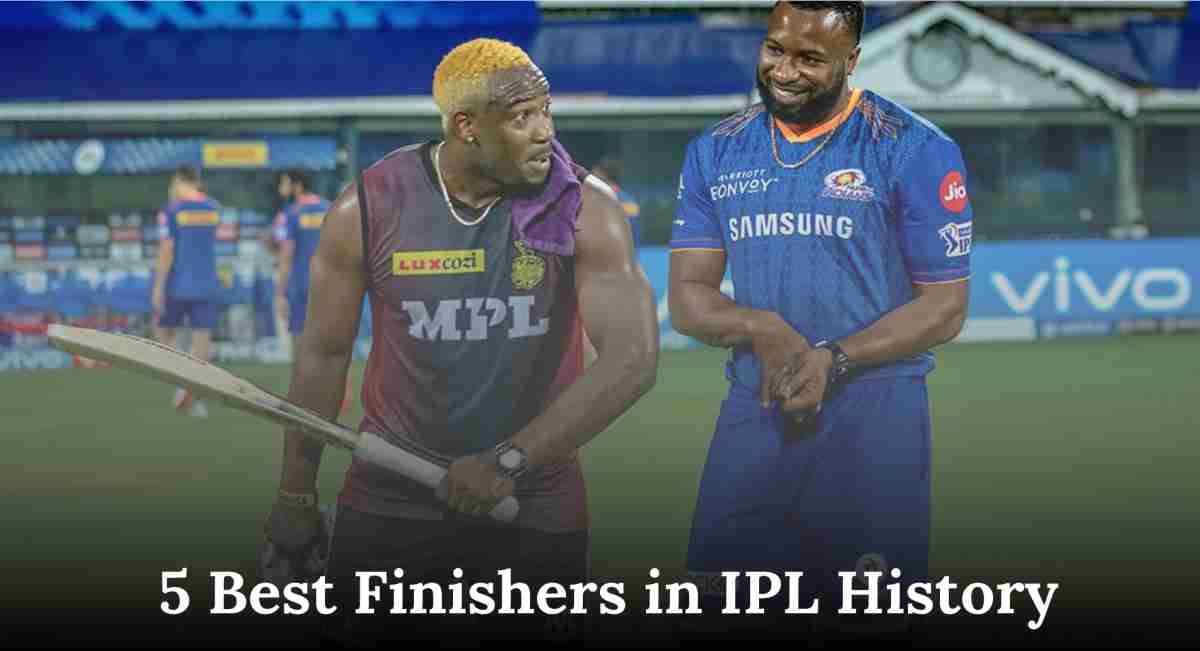
 IPL Specials10 months ago
IPL Specials10 months agoThe Five Best Finishers in IPL History
-
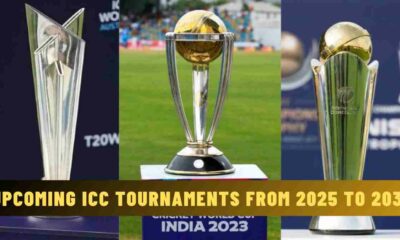
 Schedule6 months ago
Schedule6 months agoUpcoming ICC Tournaments from 2025 to 2031
-
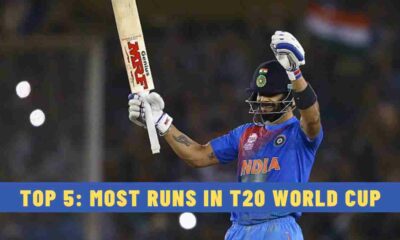
 T20 World Cup9 months ago
T20 World Cup9 months agoTop 5: Most Runs in T20 World Cup
-

 IPL Specials10 months ago
IPL Specials10 months agoHow many players can be in an IPL squad?
-

 Cricket Listicles8 months ago
Cricket Listicles8 months agoTop 5: Virat Kohli’s Highest Scores in Test Cricket
-

 T20 World Cup9 months ago
T20 World Cup9 months agoTop 5: Most Sixes in a Single T20 World Cup Edition





